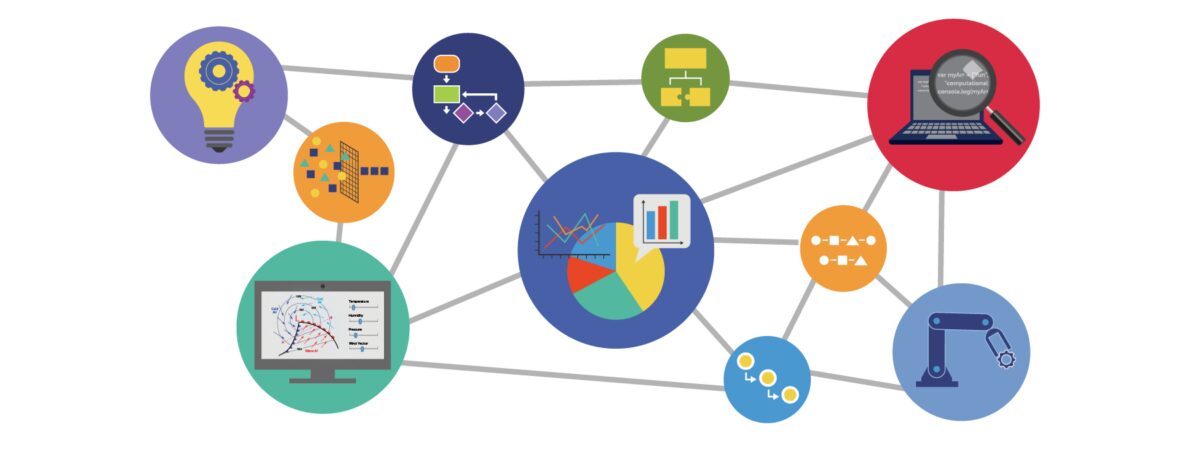
When we hear the word “literacy,” we often think of reading and writing. But in today’s world, literacy is much broader. It’s about equipping students with the fundamental tools they need to fully participate in society–including the critical need to understand how digital systems work.
We live in a world where computers shape nearly every aspect of our lives—so much so, in fact, that their presence often fades into the background. But if we want students to grow up as empowered citizens, we need to ensure they understand how these systems function. That’s where computational thinking comes in as a powerful lens for understanding systems because it provides a means to deconstruct complexity, recognize patterns, and model how components interact within a whole.
Computational Thinking in the Literacy Classroom
Here’s the good news: Teachers are already doing a lot of this work. They just might not be calling it “computational thinking.” Consider the following examples:
These are not just literacy activities—they are computational thinking skills in action.
By making these intentional connections visible to both teachers and students, we can strengthen learning in both areas. Literacy becomes a lens through which students develop computational fluency, and computational thinking reinforces core literacy practices.
Before entering research, I was an English as a Second Language teacher in San Diego. I later pursued a master’s in Teaching English to Speakers of Other Languages (TESOL) and a Ph.D. in language, literacy, and technology. Throughout my work, I’ve remained deeply committed to supporting multilingual learners, who often bring rich strengths to the classroom.
Integrating computational thinking into literacy instruction offers a powerful opportunity: It allows students to grow their language skills while engaging with the logical, creative, and problem-solving aspects of computing. Rather than treating these as separate domains, we can design learning experiences that leverage one to support the other— especially for those students who are learning in more than one language.
Drawing on this experience, I have developed integrated approaches that combine computational thinking, language, and literacy to support multilingual learners. For example, in one unit, students programmed interactive stories about their families and communities. They used Scratch to create scenes with dialogue and events, drawing on personal experiences and home languages. Teachers supported students with bilingual storyboards and vocabulary scaffolds such as “First the character says__, next__, then__” or “If __ happens, then __.” These narrative projects helped students express themselves, practice sequencing and conditionals, and strengthen both their storytelling and coding skills.
As we continue to broaden our understanding of what literacy means today, I hope more educators will see computational thinking as an essential part of their teaching toolkit. Whether you’re reading a poem, writing a story, or planning a persuasive essay, you’re also helping students develop the skills they need to thrive in a digital world.
Computational thinking and literacy are not separate tracks; rather, they’re already intertwined. By embracing that connection, we can better support all learners—especially those navigating multiple languages and systems of meaning.
For example, Digital Promise’s Computational Thinking Routines for K-5 ELA provide a practical and accessible framework for integrating CT into everyday literacy instruction. Designed with and for elementary educators, these routines align with familiar ELA practices, making them especially approachable for teachers new to CT. Each routine includes student-facing anchor charts and lesson plans that follow an “I do/We do/You do” structure, facilitating scaffolded integration into existing classroom activities.
For example, a unit on decomposition, or breaking a problem into smaller pieces can be taught by helping students break words or sentences into smaller parts to support decoding and comprehension. These routines not only integrate ELA and computational thinking, but are based on the science of reading principles, which have been shown by researchers to be an effective approach for teaching early literacy.
These routines are designed to be “unplugged,” requiring no technology, and can be integrated into daily lessons to enhance both computational thinking and literacy skills. By leveraging strategies already familiar in ELA instruction, they offer an inclusive approach that supports diverse learners, including multilingual students.
Building on this classroom-level work, Digital Promise also supports district-wide integration of computational thinking and literacy. Through tools such as the CT Pathways Toolkit, district leaders can design comprehensive plans that embed CT into literacy instruction across grade levels. These resources help districts align integrated CT and ELA instruction with existing curricula and equity goals, ensuring all students have access to meaningful, interdisciplinary learning opportunities. The toolkit also includes competency maps, implementation guides, and evaluation resources to support sustained, systemic integration.
In addition, Digital Promise fosters district-to-district collaboration through communities of practice that share strategies for CT integration. These partnerships help district teams learn from each other’s successes and challenges, particularly around embedding CT into core subjects including literacy. By focusing on both instructional practice and systemic change, Digital Promise offers the tools and structures districts need to build and scale integrated CT and literacy pathways that are practical, inclusive, and grounded in research.
What opportunities do you see for bringing computational thinking into your own literacy work?
We’re continuing to refine our resources based on educator feedback. If you’re a teacher or school leader interested in this work, we’d love to connect.
Find more resources here for integrating computational thinking: